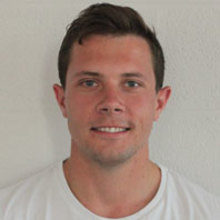Microbiology, school science and science communication
Issue: World War I
29 May 2014 article

A PHD WITH A DIFFERENCE
In December 2013 I completed my PhD at Manchester Metropolitan University, part funded and supported by the Microbiology Society. My three-year project combined microbiology, school science education and science communication. It aimed to develop novel, interesting and reliable microbiology laboratory activities that would be published and distributed to Society member schools to help promote and encourage practical microbiology lessons in the classroom.
Early in the project we realised that there was very little analysis in the literature on the current status of practical microbiology in the school laboratory. A survey of 248 teachers revealed that only two-thirds believed practical work was important in teaching microbiology and a similar number used practical microbiology in their teaching. Many of the limitations (both real and perceived) to teaching practical microbiology described included time constraints, cost, lack of equipment, lack of expertise and not enough available support. It was also clear that teachers focused on the relevance of all practical activities to the details of the curriculum, and that there was considerable demand for support from professional societies, and the expertise of their members.
With this information, I developed the resource entitled Algae: a practical resource for secondary schools, which contained five well-tested activities that supported many science curricula taught in the UK and aimed to address limitations faced by teachers. Written with consideration to current pedagogical thinking and the philosophy of science, the resource underwent stringent trialling (for design, readability, usability and ability to run activities successfully) with a range of audiences (including students, teachers and the public). An 18-month follow-up survey of users showed that the resource was being used as intended and that the activities were able to support topics across biology in over 22 biology teaching specifications (data which I am planning to publish soon!).
A second resource Viruses: a practical resource for post-16 was developed following a similar process. The aim of this resource was to encourage the use of bacteriophage in schools, as an example of a relatively easy to handle virus, as well as polymerase chain reaction (PCR). This has been sent to all school members and we hope for similar positive evaluation results.
As well as my work on practical microbiology for schools, I have designed and delivered a number of microbiology science communications activities at festivals and events across the country, many in collaboration with and supported by the Society. Most notably, I redesigned an activity from the algae resource so that it could be delivered to over 2,000 individuals comprising different audiences in different environments. This was the main activity for which I was awarded joint-winner of the Society Outreach Prize 2013 – for which I am very grateful.
I couldn’t have completed the PhD without the time and effort of my supervisory team, particularly Professor Joanna Verran (Manchester Metropolitan University) and Dariel Burdass (Microbiology Society). My aim over the last four years was to promote the science of microbiology to a variety of school audiences. I think I have made a good start, but we must continue to build on and encourage projects like this to ensure that others can share our love of all things microbiology!
JAMES REDFERN
@Microbioeduguy
microbioeduguy.wordpress.com
FURTHER READING
Redfern, J. (2012). Algae: a practical resource for secondary schools. Microbiology Society.
Redfern, J. (2014). Viruses: a practical resource for post-16 biology teachers. Microbiology Society.
Redfern, J., Burdass, D. & Verran, J. (2013). Practical microbiology in schools: a survey of UK teachers. Trends Microbiol 21, 557–559.
Redfern, J., Burdass, D. & Verran, J. (2013). Transforming a school learning exercise into a public engagement event: ‘The Good, the Bad and The Algae’. J Biol Edu 47, 246–252.
Redfern, J., Burdass, D. & Verran, J. (2014). Using Soxhlet ethanol extraction to produce and test plant material (essential oils) for their antimicrobial properties. J Microbiol Biol Edu 15, 101–104.
Redfern, J., Burdass, D. & Verran, J. (2014). The development of a new practical activity: Using microorganisms to model gas cycling. School Sci Rev, in press.
